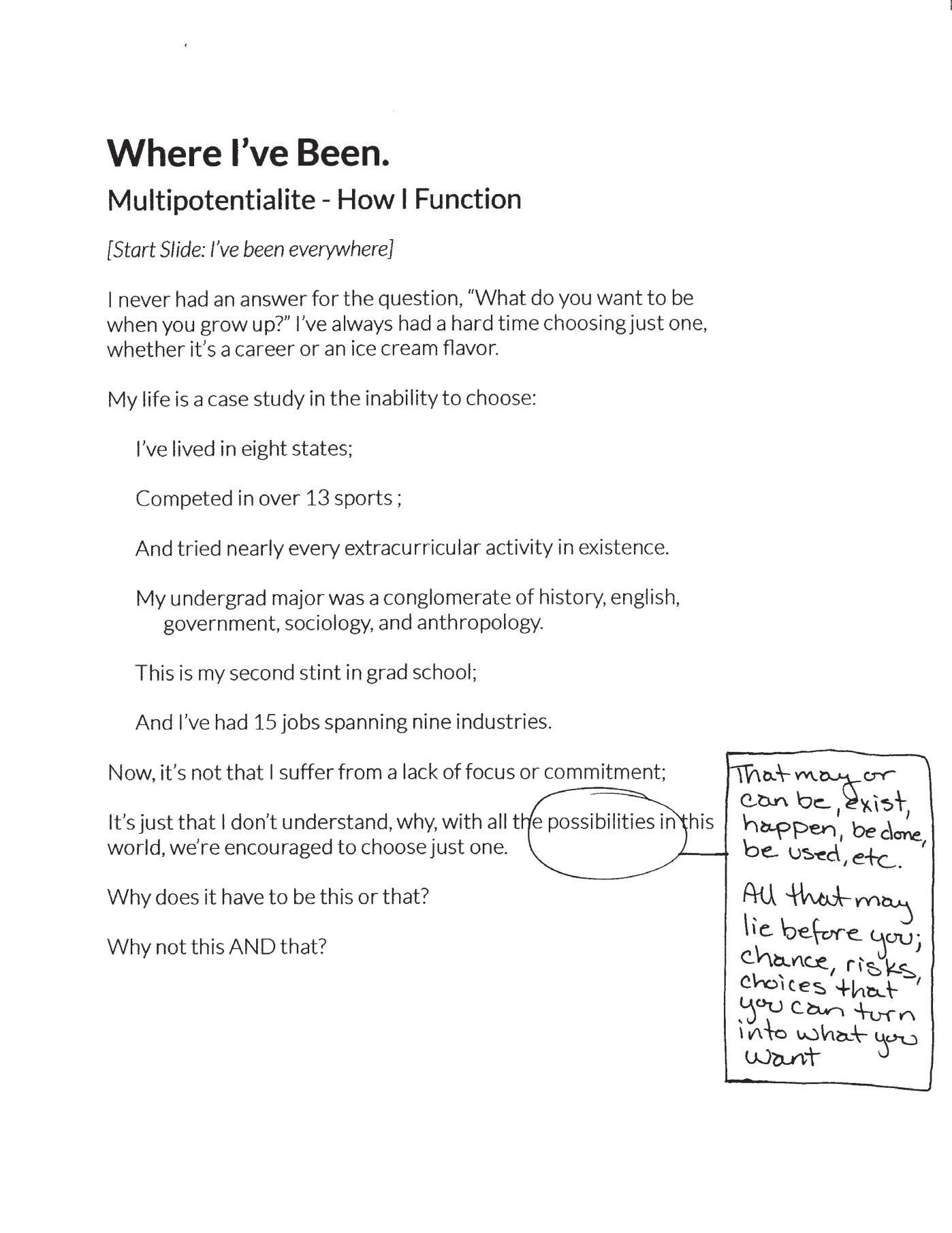
3 minute read
What Even is Design?
what even is
what even
Advertisement
design? About Design 181
What Even is Design?
Well, Here’s What I Think Anyway...
Design is the physical manifestation of the limitlessness potential of the human imagination. Design makes reinvention possible, bringing ideas, desires and possibilities into reality. It’s a means to question, probe, discover, and contemplate. Design drives a cycle of investigation and discovery, revealing insights to an ever expanding world of possibilities that lie on the horizon.
The essential building blocks of design for me are multipotentiality, makeability (more specifically the Dutch concept of Maakbaarheid1), emotion, meaning, and movement. Ideologically, my two guiding tenets, not only in design, but in life, are the concept of multipotentiality—the ability and preference of a person, particularly one of strong intellectual or artistic curiosity, to pursue and excel in different fields—and makeability (the Dutch ideology of Maakbaarheid)—the idea that the world around us is inherently shaped by humans, physically and psychologically, and design is the essential factor in that shaping. Philosophically, I adhere to the malleability of life, the idea that nothing is predetermined, everything is shaped by people, therefore everything can, and will, change, it’s simply a matter of how you choose to change it. These concepts remind me not to prejudge situations or people, but to see them as they are and look for the potential in all things, good and bad.
1 Ericson, Magnus. ‘Design and Ideology—Interview with Experimental Jetset Studio (Marieke Stolk, Erwin Brinkers and Danny van den Dungen)’. Forms of Inquiry Catalog. September 15, 2008. https:// www.experimentaljetset.nl/archive/design-ideology.
Process-wise emotion, meaning2, and movement are inextricably entwined with design for me. My process always starts with what I want to comm- unicate, in words and in feelings. I use those drivers to design until I hit a block, then I run to release my brain and the ideas come floating in. Alternately, when sorrow tightens its grip like a vice on my heart, I start designing and feel myself begin to release from emotional paralysis. It’s not a cycle per se, there is no order, but it’s a carefully balanced trifecta between physical movement, emotional expression, and design So much of the work I’m most proud of creating has come out of this combination of emotion, meaning, and physical activity that helps activate my design process. There is nothing I could pour myself into more fully that can lift me back out of any depth than expression through creativity in design.
On a broader level, design is egalitarian and accessible. It provides a means of empowerment on a personal level, to reinvent yourself whenever and however you like, and at a societal level, to remake the world we live in to fit the needs of the community. Philosophy and theory re-imagine what could be. Design creates concrete forms, structures, and language that bring ideas and conjecture into reality, for an audience of one or the whole world.
I am naturally averse to ambiguity in life, but in design I prefer it. If something is nascent or nebulous it’s waiting to be shaped. Design invites reinvention and exploration. It’s less about what you are making and more why you’re making it and how you are about the making. The more you design, the more fluid, inventive, and experimental you get. We never stop growing or changing as people, that’s the goal anyway, and design is a reflection of that growth process. Design imbues people that practice it with a constant motion to improve and learn. I find that what I’m mostly learning is how much more progress there is to make and how much more I want to try. Design doesn’t become easier as you improve, it’s simply an expanding horizon as you grow.
I’ll probably never be able to fully explain what design is, or exactly what a designer does, but that’s fine with me.
I’d rather be in a profession that starts a conversation than gives an answer anyway.
A designer does anything they want.
2 “Design must be meaningful. And ‘meaningful’ replaces such semantically loaded expressions as ‘beautiful’, ‘ugly’, ‘cute’, ‘disgusting’, glamorous’, ‘realistic’, ‘obscure’, ‘abstract’, and ‘nice,’ labels convenient to a bankrupt mind when confronted by Picasso’s ‘Guernica’, Frank Lloyd Wright’s Fallingwater, Beethoven’s Eroica, Stravinsky’s Le Sacre du Printemps, Joyce’s Finnegan’s Wake, In all of these we respond to that which has meaning.” Papanek, Victor. Design for the Real World.




